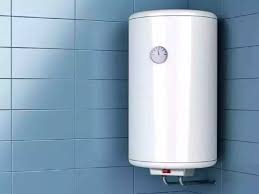When it comes to keeping ourselves comfortable, few things rival the luxury of a hot shower, especially during the chilly winter months. Geysers, also known as water heaters, have become an essential appliance in many households around the world. However, with a growing emphasis on sustainability and energy conservation, understanding the technology behind energy-efficient geysers is crucial. In this blog post, we will delve into the inner workings of these devices and explore how they contribute to energy efficiency.
The Role of Insulation in Energy-Efficient Geysers

One of the key elements that make a geyser energy-efficient is its insulation. Insulation in geysers is typically found in the form of a layer of high-quality foam surrounding the tank. This foam acts as a barrier, reducing heat loss from the heated water inside the tank to the surrounding environment. It ensures that the water remains hot for longer periods, minimizing the need for the heating element to kick in frequently.
By retaining heat effectively, energy-efficient geysers reduce the frequency of heating cycles, which ultimately results in lower energy consumption. When looking for the best geyser in India, it’s important to consider the quality and thickness of insulation, as this directly impacts the energy efficiency of the appliance.
Thermostat Control
Another critical feature in energy-efficient geysers is a thermostat control system. A thermostat allows users to set and maintain their desired water temperature, preventing excessive heating and energy wastage. When the water reaches the preset temperature, the thermostat cuts off power to the heating element, conserving energy until the water cools down and requires reheating.
Some advanced geysers even come with digital thermostats that offer precise temperature control. This level of control not only enhances energy efficiency but also ensures safety by preventing scalding due to excessively hot water.
Energy-Saving Heating Elements
Heating elements are at the heart of any geyser’s functionality, and energy-efficient models are no exception. These geysers are equipped with specially designed heating elements that maximize heat transfer to the water while minimizing energy loss.
In some cases, energy-efficient geysers feature multiple heating elements that are strategically placed inside the tank. This design ensures that the entire volume of water is heated evenly and rapidly, reducing the time the geyser needs to operate. As a result, energy-efficient geysers consume less power and are more eco-friendly.
Tank Size Matters
Selecting the right geyser capacity is crucial for energy efficiency. If you choose a geyser with a tank that is too large for your household’s needs, it will result in unnecessary energy consumption as it heats more water than necessary. Conversely, a tank that is too small may struggle to meet your hot water requirements, leading to frequent heating cycles and increased energy usage.
To determine the best geyser in India for your home, consider your family size and hot water consumption patterns. By selecting an appropriately sized geyser, you can ensure that you are not wasting energy by heating excess water.
The Impact of Energy Labels
When in the market for the best geyser in India, pay close attention to energy labels and certifications. These labels provide valuable information about the geyser’s energy efficiency and environmental impact. Look for energy-efficient ratings and certifications such as the Bureau of Energy Efficiency (BEE) star rating in India.
Higher star ratings indicate better energy efficiency, so aim for geysers with higher ratings to reduce your energy consumption. Additionally, be sure to read product descriptions and user reviews to gather information about the geyser’s actual performance in real-world settings.
In conclusion, understanding the technology behind energy-efficient geysers is crucial for informed choices that promote both comfort and environmental responsibility. When shopping for the best geyser in India, prioritize energy labels and certifications to reduce energy consumption and minimize your carbon footprint. Choosing an appropriately sized geyser with advanced features like insulation, thermostat control, and energy-saving heating elements can lead to substantial energy savings, lower bills, and a greener planet.


























